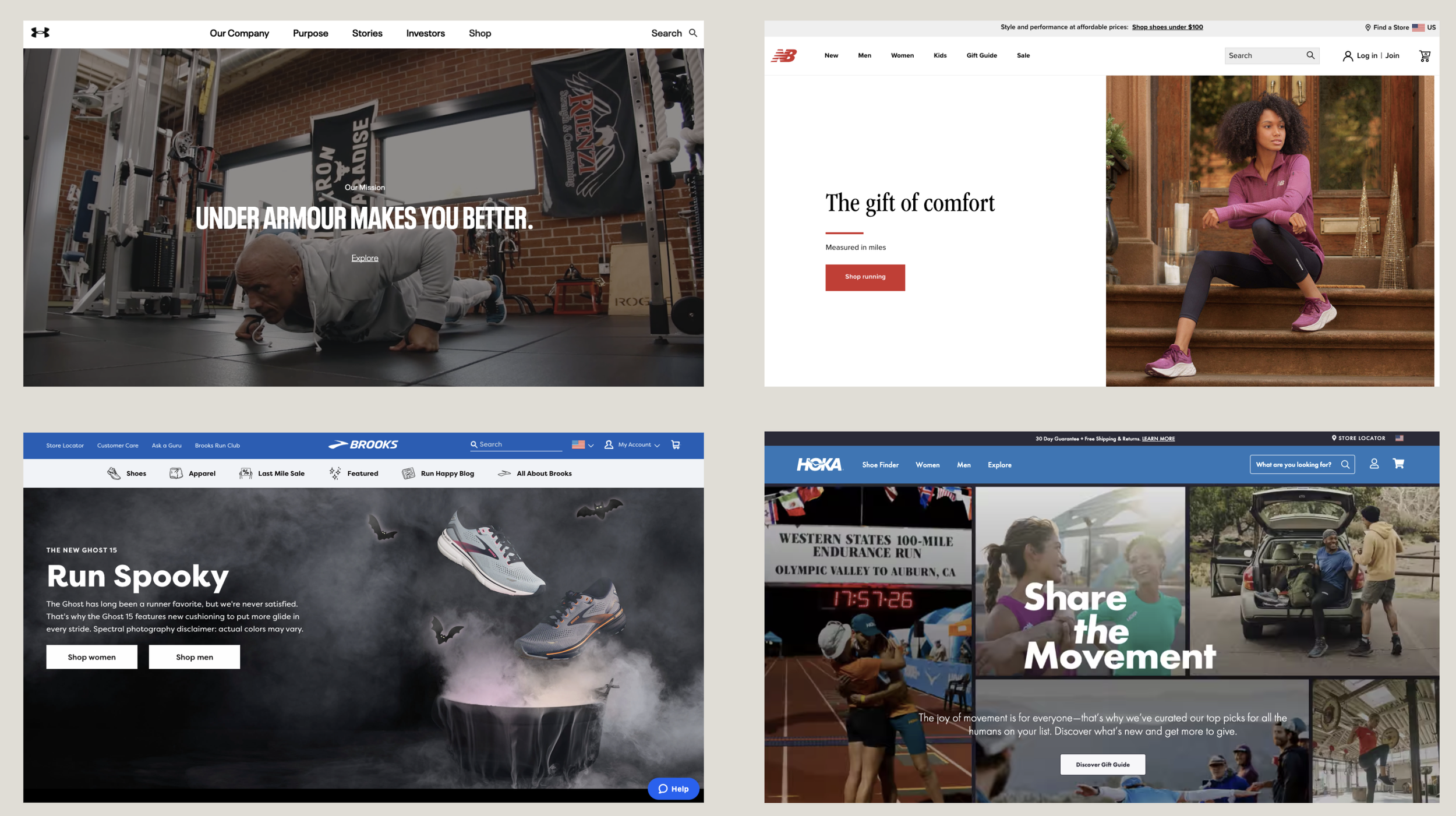How Sneaker Brands Position Themselves To Stand Apart
"To win the battle for the mind, you can't compete head-on against a company that has a strong, established position. You can go around, under or over, but never head to head…Your job [isn't] a communication project...it's a selection project. You have to select the material that has the best chance of getting through...with a purified and simplified message, you can then penetrate the prospect's mind." — Al Reis and Jack Trout, Positioning: the Battle for your Mind
"[Companies] may differentiate [their] product from competitive offerings through service, product availability, and brand image." — E. Raymond Corey quoted in Theodore Levitt, “Differentiation—of Anything”
Under Armour, New Balance, Brooks, and Hoka are all in the business of selling sneakers. But because of their positioning, they’ve built niche, loyal customer bases that have catapulted their growth and made them leaders in the pack of countless sneaker brands.
Positioning is, in its essence, how you make your brand stand apart from the competition. It’s how you convey to your audience how you’re different and what your unique value proposition is.
Just by looking at these sneaker brands’ websites, we get a sense of their positioning (screenshots are from October 2022):
Each of the brands embrace a clear, simple message that reflects their unique value prop for their target audience in a way that makes them stand apart from their competitors (instead of trying to be like or attack their competitors).
Under Armour is in potentially dangerous territory because many other athletic retail brands try to appeal to competitive athletes who want to win and improve their performance. Under Armour is currently a long-time leader in that space though so it has that position locked in.
New Balance's main customer segment is older people who care about fit and comfort but their homepage includes a photo of a young woman--that raises some red flags for me since it's sending a confusing, conflicting message to its audience ("the brand exists in the mind of the customer").
Brooks has positioned itself well in a niche market of people who like goofiness and fun. Brooks will always stand out because of that unique positioning.
Hoka's focus on joy is smart because more people are running today to make themselves feel good--that motivator aligns with the trend away from running to lose weight and the trend towards running as wellness. Hoka's focus on the running community is also smart because people are more than ever invested in their personal brands and what groups they identify with. Since the pandemic, running with friends/clubs has grown in popularity as people spent more time with others in nature.
The four brands have embraced these key positioning principles:
Focus on the Customer: Effective brand positioning should be customer-centric. It's about understanding your customers deeply—their pain points, goals, and challenges—and positioning your brand as the solution to their problems.
Solve a Specific Problem: Brands should be specific about the problem they solve. Position your brand as the go-to solution for a particular pain point or need within your niche. Avoid trying to be everything to everyone.
Speak Your Customer's Language: To connect with your audience, use the language, tone, and style that resonate with them. Effective communication involves speaking in a way that your customers understand and relate to.
Storytelling: Storytelling is a means of brand positioning. Storytelling helps people relate to your brand on a personal level.
Niche Down: By focusing on a specific niche, you can position your brand as an expert in that area and attract a more targeted audience.
Repel as Much as Attract: It's okay to have a strong point of view that may not appeal to everyone. This can help you build a passionate and loyal customer base.
Consistency: Consistency across all customer touch points (website, social, content, customer service, etc.) helps solidify your brand's identity in the minds of your audience.
Embrace Authenticity: Brands should be true to their values, personality, and mission.
Evolve With Your Audience: As your audience and market change, be willing to adapt your brand positioning to shifting customer needs and interests to remain relevant.


